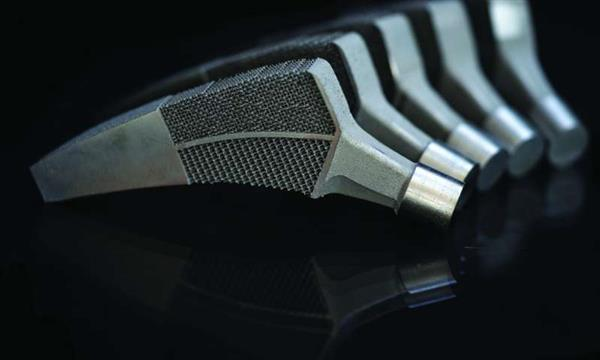Header Image: credit to Ntop, and TU Delft
In the ever-evolving landscape of medical advancements, the marriage of 3D printing technology and topology optimization has unlocked remarkable potential in the realm of hip implants. This dynamic duo not only promises enhanced osseointegration but also addresses a critical concern – stress shielding. In this article, we delve into the groundbreaking innovation of reduced stress shielding through topologically optimized hip implants, a feat that’s transforming the way we approach orthopaedic care.
Understanding Stress Shielding
Picture this: A metal implant is introduced into a patient’s body to replace or support a damaged hip joint. Over time, the implant takes on the mechanical stresses that would naturally be borne by the surrounding bone. While this may seem like a solution, it triggers a phenomenon known as stress shielding. As the implant shoulders the load, the bone experiences reduced stress, causing it to lose density and strength. This weakened bone becomes susceptible to fractures and dislocations, negating the intended benefits of the implant.
The Perfect Harmony: Topological Optimization and 3D Printing
Enter topological optimization, a design approach rooted in mathematics that seeks to distribute stresses and strains efficiently within a structure. In the realm of hip implants, this technique takes on a revolutionary role. Combining topological optimization with the precision of 3D printing allows medical device manufacturers to craft implants that not only match a patient’s bone stiffness and density but also counteract stress shielding.
A shining example of this synergy comes from the tech prowess of IT company Altair. By harnessing the power of topological optimization software, Altair embarked on a quest to redesign the conventional hip implant.
Crafting the Future: A 3D printed Topologically-Optimized Hip Implant
Imagine a hip implant created not as a standardized component but as a bespoke masterpiece, uniquely tailored to an individual’s requirements. Armed with parameters like size, weight, and anticipated load-bearing capacity, topology optimization software worked its magic. The result? A hip implant design that ingeniously distributes stress and strain, mimicking the body’s natural mechanics.
But that’s not all. The application of topology optimization extended further, revealing areas where material could be substituted with intricate lattice structures. This strategic modification not only lightened the implant but also elevated its structural integrity.
The Game-Changing Results
The true testament of any innovation lies in its real-world impact. In one case, the topologically-optimized hip implant demonstrated a staggering 50.7% reduction in stress shielding (1). This means that the implant’s presence didn’t compromise the bone’s strength. Additionally, the implant exhibited an endurance limit that could endure a jaw-dropping 10 million cycles – equivalent to jogging from Los Angeles to New York and back, not just once but twice!
Challenges
The path to innovation is seldom without obstacles. As we celebrate the potential of topologically-optimized hip implants, we must also acknowledge the challenges that lie ahead.
- Sterilization Difficulties: 3D-printed implants introduce new considerations in sterilization. The intricate lattice structures that contribute to implant performance may also harbor contaminants, necessitating novel sterilization techniques that preserve the implant’s structural integrity.
- Corrosion Concerns: The unique geometries and materials used in 3D printing can introduce corrosion risks. Addressing this challenge requires the development of corrosion-resistant materials and surface treatments to ensure the implant’s long-term viability.
A Glimpse into the Future
If we can overcome these challenges, the fusion of topological optimization and 3D printing has bestowed the medical world with a transformative tool. As we witness stress shielding dissipate before our eyes, we catch a glimpse of the future – one where hip implants, and potentially other medical devices, become personalized marvels, engineered to harmonize seamlessly with the human body.
In closing, the convergence of mathematical ingenuity and cutting-edge technology is sculpting a path towards a new era of orthopaedic care. Reduced stress shielding is no longer a distant dream; it’s a reality that holds the promise of stronger, healthier tomorrows for patients around the world.
Learn More:
[1]
 This article was written by Ben Clegg part of an ongoing series of scientific communications written and curated by BioTrib’s Early Stage Researchers.
This article was written by Ben Clegg part of an ongoing series of scientific communications written and curated by BioTrib’s Early Stage Researchers.
Ben is researching the Wear particle characterization and bio-compatibility of newly 3D printed self-lubricating polymer composites in total joint replacements at Luleå University of Technology, Sweden.

